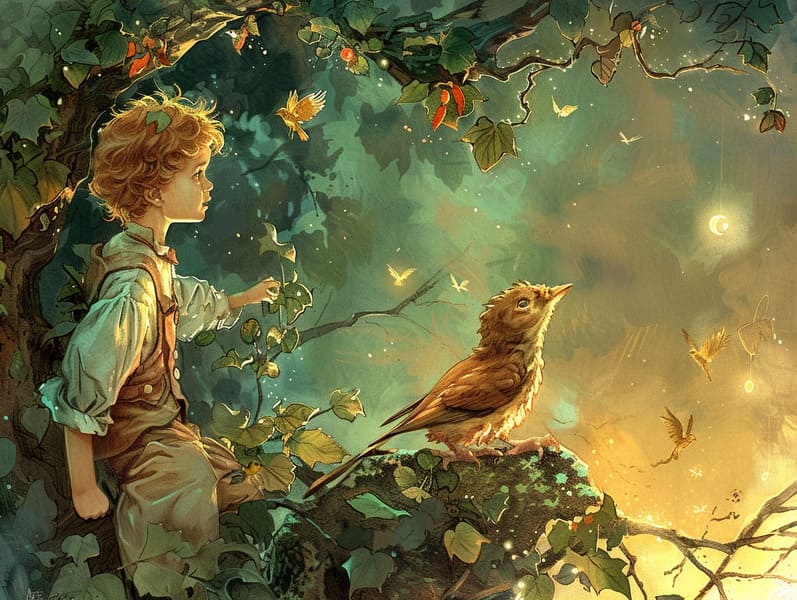The Evolution of Bedtime Fairy Tales with the Persistent Splendor.
The Evolution of Bedtime Fairy Tales with the Persistent Splendor.
Blog Article

Historical fairy tales have deep roots. These stories have been spoken from one generation to the next long before they were ever transcribed. They emerged from a variety of civilizations, including European traditions. They were initially disseminated among older generations, often carrying themes and messages mirroring the societal norms and beliefs of the time.
The Grimm brothers, Jacob and Wilhelm Grimm, were among the first to compile and publish many of these beloved fairy tales. Their compilation, "Grimm's Folk Tales," included stories like "Cinderella," "Hansel and Gretel," and "The True Story of Snow White," which have since become mainstays in the world of timeless fairy tales. Similarly, Hans Christian Andersen's fanciful narratives, such as "The Story of the Little Mermaid," and "The Ugly Duckling," have captured hearts worldwide, solidifying their place in the pantheon of beloved fairy tales.
Despite their age, fairy tales remain as relevant as ever, especially as children's bedtime stories. These whimsical stories are now available in different formats, including vividly illustrated books, delightful animations, and internet fairy tales.
Their continued relevance can be ascribed to several whimsical characteristics:
Crucial Morals: Ancient fairy tales often impart important moral lessons. Fairy tales like "The Boy Who Cried Wolf" teach the benefit of integrity, while "The Tortoise and the Hare" emphasize the values of steadfastness and modesty. These tales offer young readers clear distinctions between moral and immoral, helping to shape their moral compass in a gentle yet significant way.
Warmth and Understanding: Fairy tales frequently feature heroines facing struggles and tests, prompting readers to sympathize with their struggles and champion their triumphs. For instance, "The Tale of Beauty and the Beast" highlights the necessity of appreciating inner worth to know the real person of a being, nurturing compassion and understanding.
Cultural Awareness: Many timeless fairy tales are deeply embedded in the cultural contexts from which they arose. Engaging with these stories can provide informative snapshots into different traditions, promoting a sense of world understanding and awareness.
Imagination and Creativity: The fantastical elements in traditional fairy tales—magical kingdoms—enliven children’s creativity. These tales move readers to otherworldly realms, triggering fantasy dreams and a sense of amazement that persists a lifetime.
Classic fairy tales are not only spellbinding but also enlightening. They provide bewitching tools in enhancing various intellectual and emotional capacities in the young. When old fairy tales are read aloud, they advance communication skills by showing new words and intricate sentence structures. This practice also cultivates listening skills and concentration, as little ones hang on every word, anxious to see what happens next.
Furthermore, examining the themes and characters of old fairy tales can nurture logical thinking and critical thinking. Kids are instructed to see patterns, guess what will happen, and realize cause and effect. These discussions also help the young articulate their thoughts and feelings, promoting their emotional intelligence.
In today’s modern era, the existence of online fairy tales has made these stories more acquirable than ever. Web-based platforms and digital apps share vast collections of old fairy tales that can be accessed or listened on anytime, anywhere. Fairy tales told out loud are particularly widespread, extending an delightful method for children to engage with these charming stories. Spoken stories and read-out-loud videos move characters and settings to life, often supported by whimsical audio effects and music that augment the tale experience.
The timeless fascination of old fairy tales lies in their ability to transform to today's world while continuing with their fundamental ideas. Contemporary reimaginings of these stories often feature more diverse figures and modern settings, making them pertinent to today’s audience. However, the core values of courage, understanding, and fairness remain unchanged, continuing to touch readers of all ages.
Fairy tales also offer a sense of serenity and recognition. They present to a methodical narrative with a transparent awesome site beginning, middle, and end, often drawing to a close with the conclusion of conflicts and the triumph of morality over immorality. This steadiness can be encouraging for kids, providing a sense of sturdiness in an constantly changing world.
Timeless fairy tales continue to captivate and inform new generations, maintaining their beauty and value in modern society. As bedtime stories for kids, they supply a perfect blend of delight and instruction, sustaining moral values, empathy, and creativity. The accessibility of online fairy tales and the sought after status of fairy tales recited affirm that these old tales remain acquirable to new generations.
By sustaining and conveying these tales, we continue to extol the rich tapestry of inventiveness and cultural heritage. Whether you are viewing a colorful picture book, browsing a electronic library, or listening through an audiobook, the appeal of Grimm's fairy tales is always within reach. These tales emphasize of the eternal power of narratives and its ability to unify us across generations and cultures.
If you are seeing a richly illustrated book, seeing a electronic library, or hearing an spoken story, the attraction of bedtime fairy tales is always within reach.
These narratives emphasize of the unceasing ability of stories and its ability to bond us across centuries and lands, forging a link that fascinates and enlightens alike.